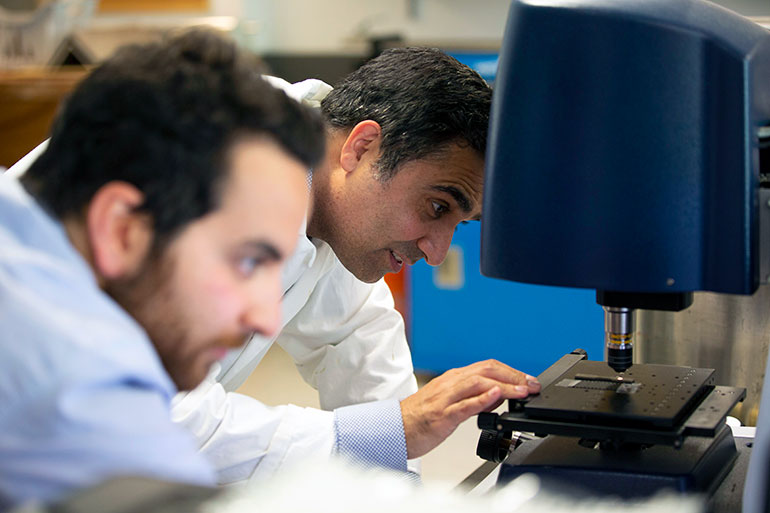
A growing industrial demand for multifunctional bio-friendly raw materials is pushing researchers to develop value-added and energy-saving biocomposites and processes.
Discarded materials mixed into a slurry for a second life
Using polymers and natural stone slurry waste, researchers at UBC Okanagan are manufacturing environmentally friendly stone composites.
These new composites are made of previously discarded materials left behind during the cutting of natural structural or ornamental stone blocks for buildings, construction supplies or monuments. While reusing the waste material of natural stone production is common in cement, tile and concrete, adding the stone slurry to polymers is a new and innovative idea, explains School of Engineering Professor Abbas Milani.
A growing industrial demand for multifunctional bio-friendly raw materials is pushing researchers to develop value-added and energy-saving biocomposites and processes, he explains.
"Because the slurry is a waste material, it comes at a lower cost for recycled composite production," says Milani, director of UBC's Materials and Manufacturing Research Institute (MMRI)
Milani and his colleagues recently received UBC eminence funding to establish a cluster of research excellence in biocomposites. The cluster will develop novel agricultural and forestry-based bio and recycled composites to minimize the impact of conventional plastics and waste on the environment.
The powdered stone waste used in the project provides flexibility to the new particulate polymer matrix composite. It can be mixed at different ratios into the finished product through appropriate heat or pressure to meet structural requirements or aesthetic choices, defined by industry and customers.
"This green stone composite can easily be integrated into a variety of applications," says UBC Research Associate Davoud Karimi. "These composites can be used in decorations and sanitation products ranging from aerospace to automotive applications."
The researchers varied the amount of stone added to the composites then tested several parameters to determine strength, durability and density along with thermal conductivity. The molding and mechanical tests were conducted in the Composites Research Network Okanagan Laboratory with collaboration from the MMRI.
By adding the stone waste to the composites, researchers determined that it not only increased the virgin polymer's strength and durability, but the composites' conductivity increased proportionally based on the amount of stone added.
"The increased strength is important, but the increased conductivity (up to 500 per cent) opens a huge door to several new potential applications, including 3D printing with recycled composites," explains Milani.
"Any time we can divert waste from landfills and generate a product with the potential of economic benefit is a win-win," Milani adds. "We hope that these sorts of products, that are carefully designed with the aid of multi-disciplinary researchers focused on 3R measures (repairable, reusable, and recyclable), can significantly contribute to the economy of our region and Canada as a whole."
The research was funded by the Natural Sciences and Engineering Research Council (NSERC) and the National Research Institute for Science Policy (NRISP). It was recently published in two prestigious journals Composite Structures and Composites Part B: Engineering.
About UBC's Okanagan campus
UBC's Okanagan campus is an innovative hub for research and learning in the heart of British Columbia's stunning Okanagan Valley. Ranked among the top 20 public universities in the world, UBC is home to bold thinking and discoveries that make a difference. Established in 2005, the Okanagan campus combines a globally recognized UBC education with a tight-knit and entrepreneurial community that welcomes students and faculty from around the world.






